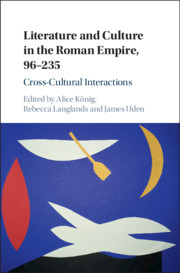Within the rhetorical frameworks of exhortation and illustrative exemplum, Horace's second and sixth Roman Odes offer compressed, contrasting images of a young person's education and transformation, presenting these as stories about a puer and a virgo, respectively, in a lyric mode that does not narrate. In the first of these stories (Carm. 3.2.1–12), Horace slyly usurps characters from Vergil's unfinished Aeneid, alluding to some of its distinctive narrative techniques, but also draws on the similes and plot structure of its Iliadic model. The second of Horace's stories (Carm. 3.6.21–32) plays off his first, as he converts the adulta virgo who figures in Carm. 3.2 into her antitype. This story has as its intertext an obscene Hellenistic epigram by Automedon. Horace makes both intertextual and metatextual use of his models, while his indirect references, through Homer, to Vergil's intended design for his emerging Aeneid may be considered under the new heading of extratextual.


